Protea mundii
| Botanical Name | Protea mundii |
|||||||||||||||||||||
| Family | Proteaceae - The Protea family
|
|||||||||||||||||||||
| Pronunciation | PROH-tee-uh MUN-dee-eye |
|||||||||||||||||||||
| Common Name(s) |
English: Forest White Sugarbush; Forest Sugarbush; White Sugarbush
Afrikaans: Bos-witsuikerbos; Suikerbos; Witsuikerbos
|
|||||||||||||||||||||
| Plant Group |
|
|||||||||||||||||||||
| Plant Size |
|
|||||||||||||||||||||
| Position |
|
|||||||||||||||||||||
| General Information |
|
|||||||||||||||||||||
| Specific Information | Protea mundii is an erect, single stemmed shrub to small tree with elliptic, bright green leaves. New growth is pinkish and slightly furry while mature leaves are smooth with a red margin. Young stems and shoots are an attractive deep pink colour with fine hairs, turning smooth and grey as they mature. The plants are reportedly killed by fire with only the seeds surviving. A fast growing species which makes a useful windbreak or as part of a boundary planting. |
|||||||||||||||||||||
| Ad Break | ||||||||||||||||||||||
| Flowers | ||||||||||||||||||||||
| Description | small, oblong heads up to 8 cm long and 6,5 cm across, with pink or creamy-green bracts |
|||||||||||||||||||||
| Season |
|
|||||||||||||||||||||
| Colour |
|
|||||||||||||||||||||
| Growth Rate |
|
|||||||||||||||||||||
| Plant Uses |
|
|||||||||||||||||||||
| Distribution and Habitat | in the Western Cape to the southern border of the Eastern Cape, in a small area on the Kogelberg to Klein River Mountains, and a separate, larger area on the Outeniqua and Kouga Mountains to Tsitsikamma and Winterhoek Mountains, on moist mountain slopes, ravines, along streams and as a pioneer species along forest margins, in relic patches of once extensive forests, often in dense stands |
|||||||||||||||||||||
| Planting Suggestions | Sow seeds in autumn in acid soil. Protea Mundii needs well-drained, nutrient poor soil in an airy position. In general, Proteas do not grow well in clay soils and will die if their roots are kept wet. If possible plant on a slope or on slightly elevated mound to prevent drainage problems. Dig a hole twice the width of the container and one and a half times the height. Do not apply artificial fertilizer or fresh manure to the soil mix. Mulch well around the plant but keep the area around the trunk of the plant clear, as the crown of the plant must be able to dry off. Proteas have a dense network of fine roots just below the surface of the soil and no cultivation should take place below them as disturbance will damage the roots and possibly introduce fungal disease, resulting in the death of the plant. The use of a thick mulch of leaf litter and pine bark/needles will feed the plant, keep the soil cool and discourage weeds. In summer rainfall areas water regularly during winter and occasionally in summer if the weather is dry. Always water in the early morning, preferably before the sun has fully risen. Stems bearing old flower heads should be cut back to encourage the development of new shoots and long stems. If growing Protea from seed, see this blog: http://kumbulanursery.co.za/blog/obtaining-and-growing-protea-seeds |
|||||||||||||||||||||
| Lorraine's Garden Notes | References: http://finebushpeople.co.za/http:/ en.wikipedia.org/wiki/Protea_mundii fernkloof.com/species.mv?893 http://redlist.sanbi.org/species.php?species=799-91 http://www.proteaatlas.org.za/sugar3.htm Rebelo, Tony; 1995. Sasol Proteas - A field guide to the Proteas of Southern Africa. Fernwood Press, Vlaeberg COATES-PALGRAVE, M. 2002. Keith-Coates Palgrave Trees of southern Africa, 3rd edn., 2nd imp. Struik Publishers, Cape Town. |
|||||||||||||||||||||
| Medicinal Uses | No data found. |
|||||||||||||||||||||
| Ad Break | ||||||||||||||||||||||


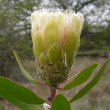
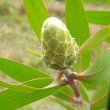
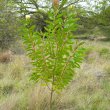
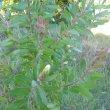
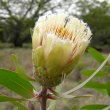
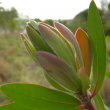


Discuss this plant
Share knowledge, ask a question or give an experience.